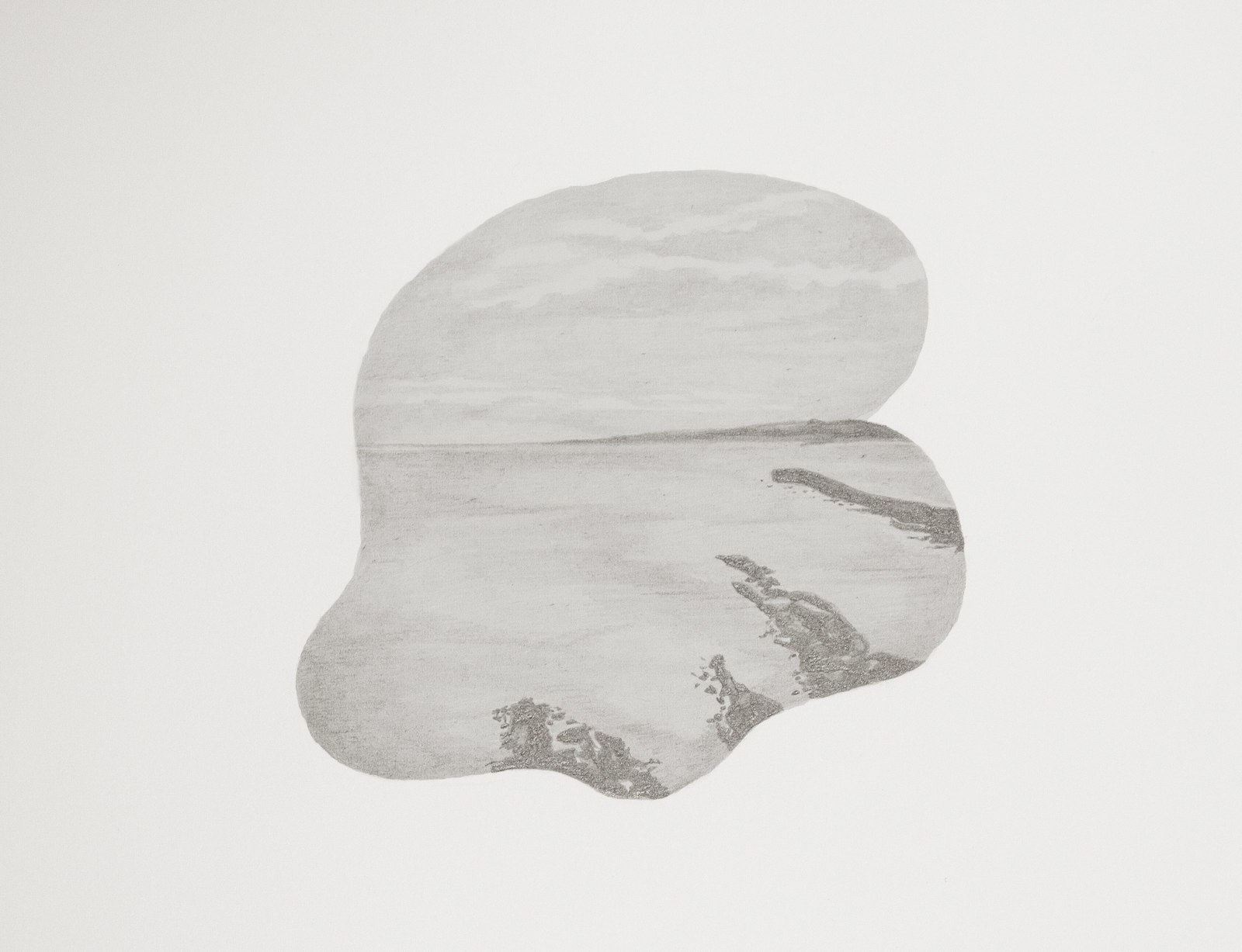
I. “The forms in my work are usually always abstracted from close observation of things around me”
Muhanned Cader is an observer of certain things not all things. What he edits out of his work is as relevant as what remains. The affinity of one seemingly unrelated thing to another thing, such as a Sinhalese beetle nut-cracker and a brigadier’s helmet or the marrying of a horizontal landscape within a curvilinear frame is germane to Cader’s images and the processes behind their creation. From afar the pairings and juxtapositions often appear beguiling, often non-sensical. Up close things are more wittingly crafted. When things are connected they are never more than details; the beak of a bird but never its entire body; the partial reflection of a setting sun upon the water’s edge or the hilt of a sword but never with its blade. The detail is a carefully excavated fragment. Each fragment is a piece of information removed or cut free from its mooring. The specificity of what thing came from where doesn’t concern Cader other than the fact everything arises from the observation of his physical surroundings as well as from the assorted printed matter that passes through his hands. In a related manner, Cader does not use abstraction to reduce content into form to capture an essential meaning or message. What matters, more tellingly, is his deployment of abstraction to relinquish a form from its original reference, just far enough so that it is neither this nor that. Cader's drawings imagine a moment before form and meaning are aligned into perfect registration. They take us back, as it were, to a time when ideograms and hieroglyphs described the world through the associative power of the image.
II. “My drawing practice has been concerned with the non-linguistic representation of objects and ideas themselves”
Like all writing, comprehension rests on being able to identify the appearance of characters, which then gives rise to their meaning or legibility. In Figures of Thought (2009) the legibility of the characters is deliberately held in abeyance. Their suspension of meaning is part of a conceptual conceit that lies behind Cader’s creation of an ongoing series of pictographic scripts, which when broken down in their constituents parts reveal a jigsaw of visual shapes culled from a range of printed matter. Covering a diverse list of bibliographic references, each drawing is formed by meticulously copying fragments of imagery, selected by the artist across a range of books and comics. Taking a detail of an existing illustration, such as the outline of a building and joining it with a random detail of a rooster Cader creates a new family of font-like forms that take on the legibility of writing. They hold the promise of coherence but are ultimately no more than the sum of their parts, laying bare to nothing more than a visual silhouette of calligraphic-like shapes.
III. “Whilst I try not to be obviously political, my work seeks to problematize the inherent politics of image-making”
Along with fragments, Cader deploys stencil cut-outs and collage to create his drawings and paintings¹. Preferring the landscape over the figure, his scenic vistas are notable for being non-rectangular. The landscape appears instead within a cloud or a bubble-like form. The effect is reminiscent of the way the world might be naturally framed as a reflected image through a puddle of water or across the surface of a tank or reservoir. Through the course of a day these naturally occurring mirrors reflect the imperceptible changes in the landscape over time. By contrast, an image, whether in the form of a drawing or a painting, is necessarily limited to a singular view. One that is fixed and stationary. The conceptual reckonings of such a predicament are what interest Cader. “This is why I remove the rectangular frame that surrounds the landscape in my drawings. It is similar to asking what surrounds our understanding or do we only ever know part of the truth? This for me is true politics, where one never sees the real or whole picture”
Though we quest to grasp life in its totality, Cader’s work underlines that we are by the same token limited to seeing it in fragments, through certain angles, perspectives and narratives. A series of cut-out forms containing delicately rendered light-filled spaces, wittingly titled Casting Light (2009), ponders such a proposition yet further. To what extent can an artwork voice opinion? Is an image ultimately better equipped to cast doubt rather than light on subject? While Cader’s work is not obviously political he is a political artist with a capital ‘A’ to pose such questions.
-Sharmini Pereira